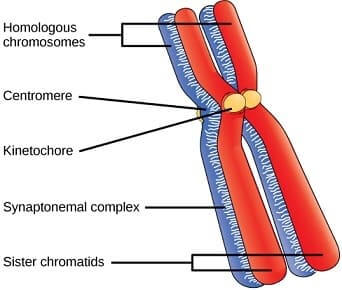Chromosomes
The chromosomes (from the Greek χρώμα, -τος chroma, color and σώμα, -τος soma, body or element) are structures formed by DNA and proteins, which contain the genetic information of the individual. They are in the cell nucleus, although they only become visible when the cell is dividing (mitosis or meiosis). They cannot be seen at interphase because they are in the form of chromatin.
In eukaryotic cells, the chromosomes are linear, more or less elongated. In prokaryotic cells, the bacterial chromosome is circular.
DNA is made up of a sequence of nucleotides (two antiparallel chains) that only differ in their nitrogenous bases, so they can only be represented by their sequence of nitrogenous bases:
... AAAGAACTGTAACCTGCACAGTCACGTGACGTAGTCCCAGTGCACGTGC ...
This series of nitrogenous bases represents a fragment of DNA, the stuff that makes up genes. A gene is a segment of DNA that contains the information necessary to synthesize a macromolecule, such as a protein or RNA. Therefore, a chromosome is made up of a set of genes that determine the hereditary characteristics of the cell.
Genes that are on the same chromosome are called linked genes, since they tend to be passed on together.
A somatic chromosome is made up of:
- Two identical chromatids from DNA duplication, which is why they are called sister chromatids.
- The centromere or primary constriction that makes the chromosome present four arms, holding the two chromatids together.
- The kinetochore, where the microtubules of the mitotic spindle are inserted.
- The satellite, segment of the chromosome separated by the secondary constriction).
- The telomere is the end of the chromosome, with special properties that protect the chromosome.
